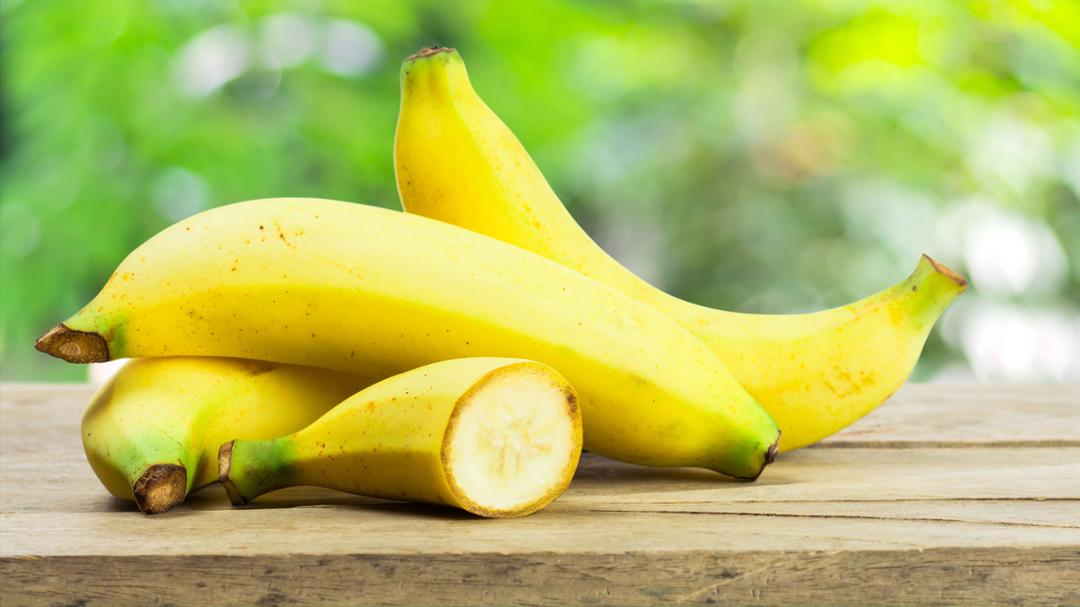Texas Tech’s Amanda M.V. Brown explores microbial mutualism for ways to make the world’s most popular fruit more resilient and pandemic-resistant.
Decades ago, the world’s most commercially popular banana variety vanished around the globe, the result of a devastating pandemic that is re-emerging.
Amanda M.V. Brown is conducting research at Texas Tech University that could blunt a recurrence of the pandemic. She is an associate professor in the Department of Biological Sciences, which is part of the College of Arts & Sciences. Her work focuses on microbial symbiosis and the way microbes function in and cooperate with hosts.
The U.S. Department of Agriculture (USDA) has awarded her a five-year grant to explore how bananas could be made more durable and pandemic-resistant through changing their microbiomes.
“This is work I got interested in a few years ago at a conference in which a researcher reported on the genome of banana,” she said. “Banana is one of the most important commercial crops in the world, with 130 countries depending on it as a staple food (as starch plantains) or an export key to their economies.”
Because bananas have been cultivated for roughly 8,000 years, they have changed over time, she explained. Most who purchase supermarket bananas, which are domesticated, wouldn’t recognize wild banana varieties because they are packed with gigantic seeds with little fruit. But with banana and other crops, sometimes the wild relatives hold valuable disease-protective genes (and microbiomes) that could be harnessed to protect the commercially valuable cultivars.

At that conference, Brown inquired about the diversity of microbiomes in bananas, and in particular, whether there was research into how the wild banana microbiome might increase protection from disease and found virtually no research had taken place in that area. Since it dovetailed with her own interests in beneficial microbes, she dove in.
Microbes and hosts cooperate in a variety of ways. Sometimes it is through passive association taking up resources to outcompete invaders; other times it is an exchange of resources or chemical cooperation called mutualism. For example, the host may provide energetic support or shelter. Microbes can also manipulate a host or each other to prompt specific beneficial actions.
“Those are some of the types of mutualism I am interested in,” she said. “We know from Darwinian natural selection that mutations arise that make one partner not cooperate as much and can increase that mutant individual’s relative fitness. In other words, generally, it pays to be selfish. Nevertheless, we see cooperation and mutualism a lot in nature. It’s a puzzle that we don’t understand with practical value, for example, in the areas of health.”

While a common understanding of evolution is sometimes associated with dinosaurs, when it comes to tiny organisms such as microbes and viruses, they can mutate and evolve quickly. One need look no farther than the recent COVID-19 pandemic for evidence of a fast-changing virus repeatedly adapting.
“Microbes in microbiomes can change fast,” she said. “Because they are so small, a few mutations can lead to a giant change in function; in the case of banana microbiomes, changes could lead to increased or decreased disease resistance.”
The prevalent commercially available banana today is the Cavendish variety and has been around since the 1950s. It is the type found on your supermarket shelves and in your grandmother’s banana pudding. Estimates suggest global exports of Cavendish are about $12 billion per year.
Cavendish replaced the Gros Michel banana, which was wiped out by a fungal pathogen known as Panama disease that wreaked havoc globally. The fungus does not attack the fruit itself but instead chokes the life out of banana tree roots. It is as merciless as it is relentless.
“There was understandable panic over this because the banana was a fruit familiar and available to everyone,” Brown said. “So, when ‘tropical race 1’ Panama disease (caused by a pathogen called fusarium fungi) decimated the Gros Michel, growers replaced it globally with the Cavendish, which was different in taste but was a pandemic-related variant. However, Panama disease has continued to evolve and now ‘tropical race 4’ seriously threatens to decimate global Cavendish bananas.”
In other words, history could repeat itself. The new strain has been detected in more than 20 countries so far.
With that gloomy prospect on the horizon, Brown’s work explores the possibility of taking microbiomes present within wild bananas and using the helpful ones to protect Cavendish bananas. There has been similar work on tomatoes, corn, wheat and other crops where microbe communities have been harnessed for disease protection through antifungals, antivirals and antibacterial compounds that protect plants.
Efforts like these have already surfaced promising pharmaceutical options with one of the most famous examples being the anti-cancer class of drugs called taxanes, which are associated with microbes living inside a plant. Together, bacteria and fungi from plants have yielded an enormous range of drugs and promising bioactive compounds.
“There is amazing, very complicated chemistry performed by microbes in these plants,” Brown said. “Sometimes the chemical compound synthesis is performed synergistically with the microbes working together or microbes and hosts making it happen together.
“The new grant lets us address a basic question: How do microbes and hosts cooperate biochemically and synergistically to fight diseases?”
The idea will be to first discover protective microbe communities, then inoculate banana plants with these beneficial microbes and tease apart the complicated processes that provide the disease protection. The goal is to produce an inoculum that would specifically protect the Cavendish variety.
“Not all varieties of bananas are susceptible to the new ‘race 4’ pandemic,” Brown said, “but the commercial varieties are very susceptible. If it arrives in your plantation, all of your bananas will die. It wipes them out. It is quite serious, and there is no evidence the banana plant could suddenly evolve to resist this, and breeding is difficult given that banana does not have typical genomes. They are triploid and do not make seeds.”
To make matters worse, the fungi can spread easily in water and soil, not to mention the pathogen’s tiny spores finding their way to anything that moves between farms as part of the global farming and trade.
The research would have global implications. While bananas are not a major crop in the U.S., they are extremely important in a number of developing economies, which do not have funds for extensive and intricate research. For now, they primarily rely on fungicides that can often be ineffective or cause collateral damage.
“I am actually hoping for two things as a result of this research,” she said. “The first is that it would provide practical benefits for farmers, specifically banana farmers, to help protect their plants from disease in a more sustainable and less toxic way. Second, I am really interested in learning more about how organisms cooperate and form stable and adaptable disease-protection.”

